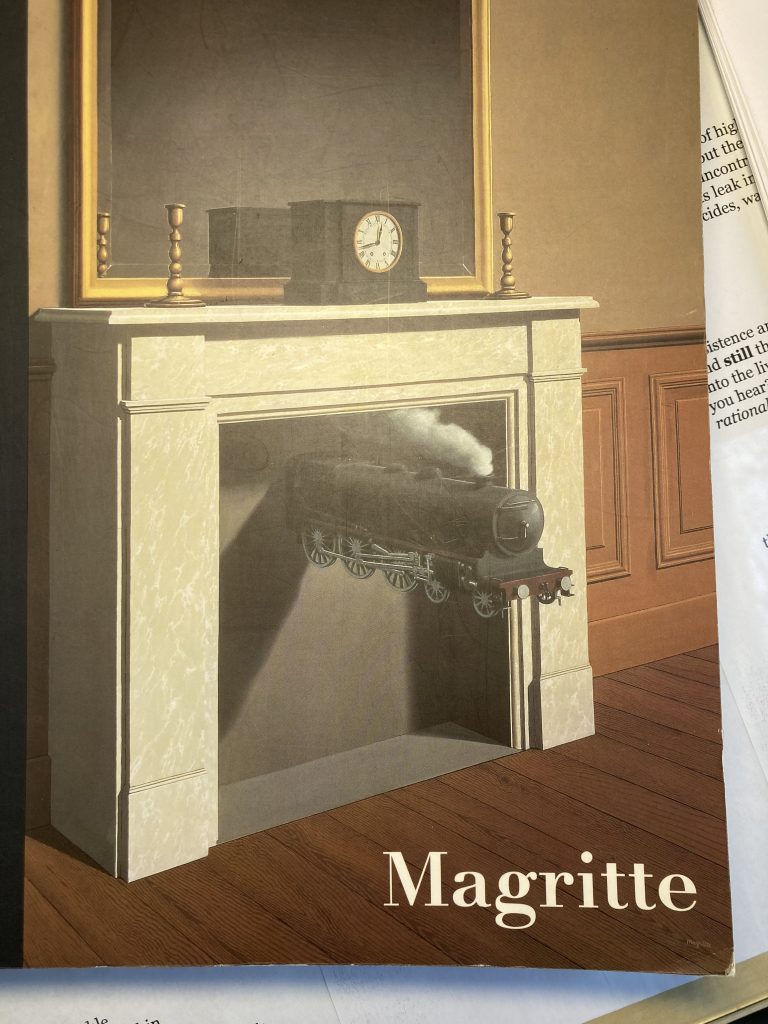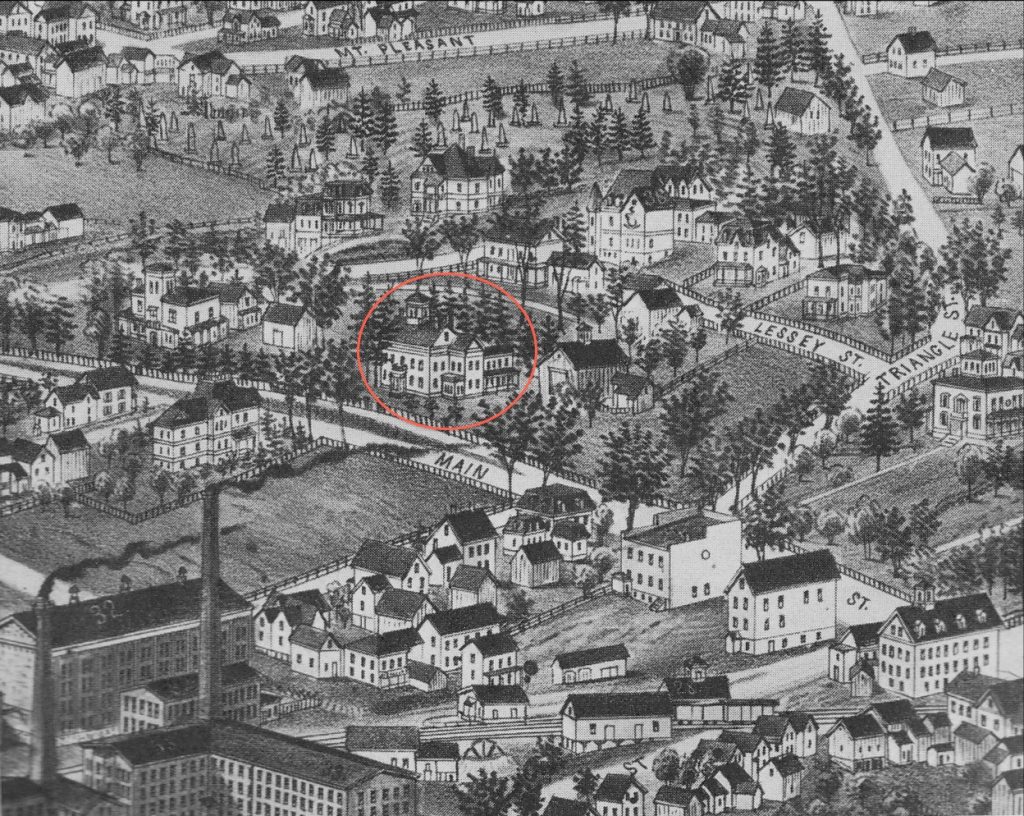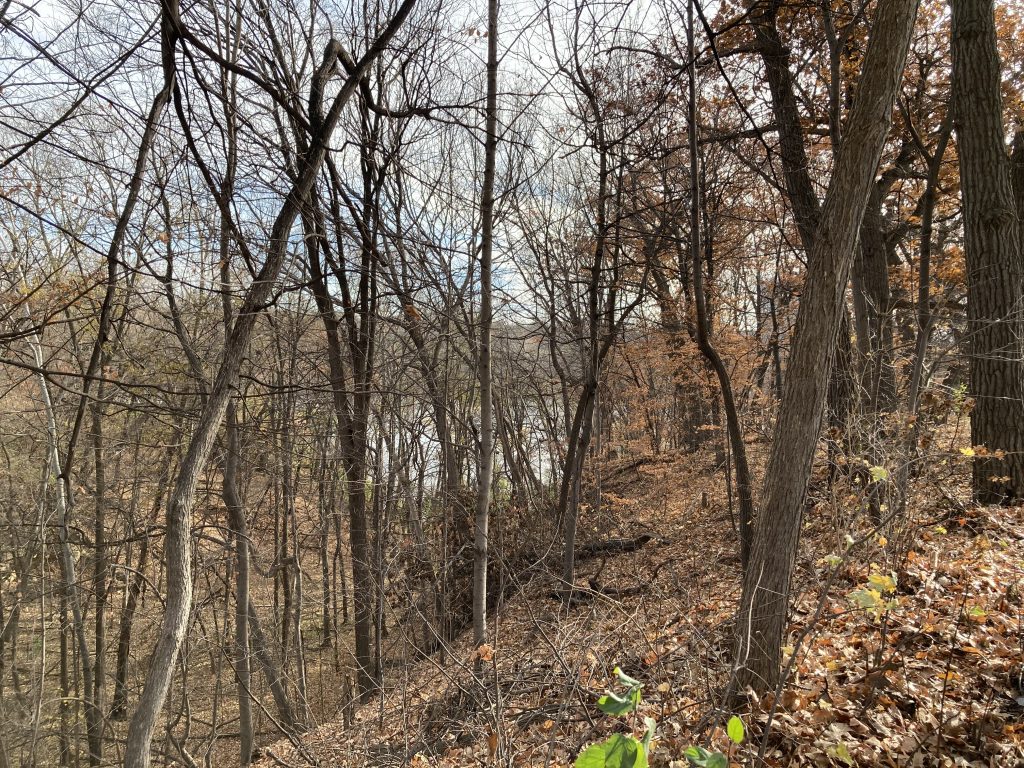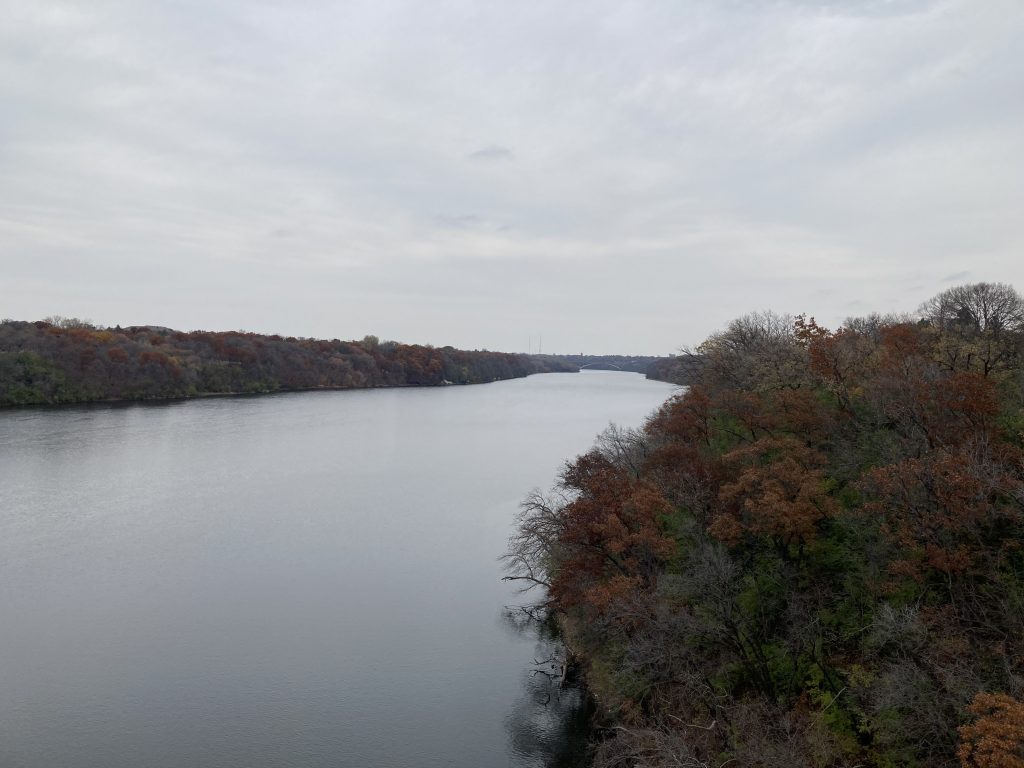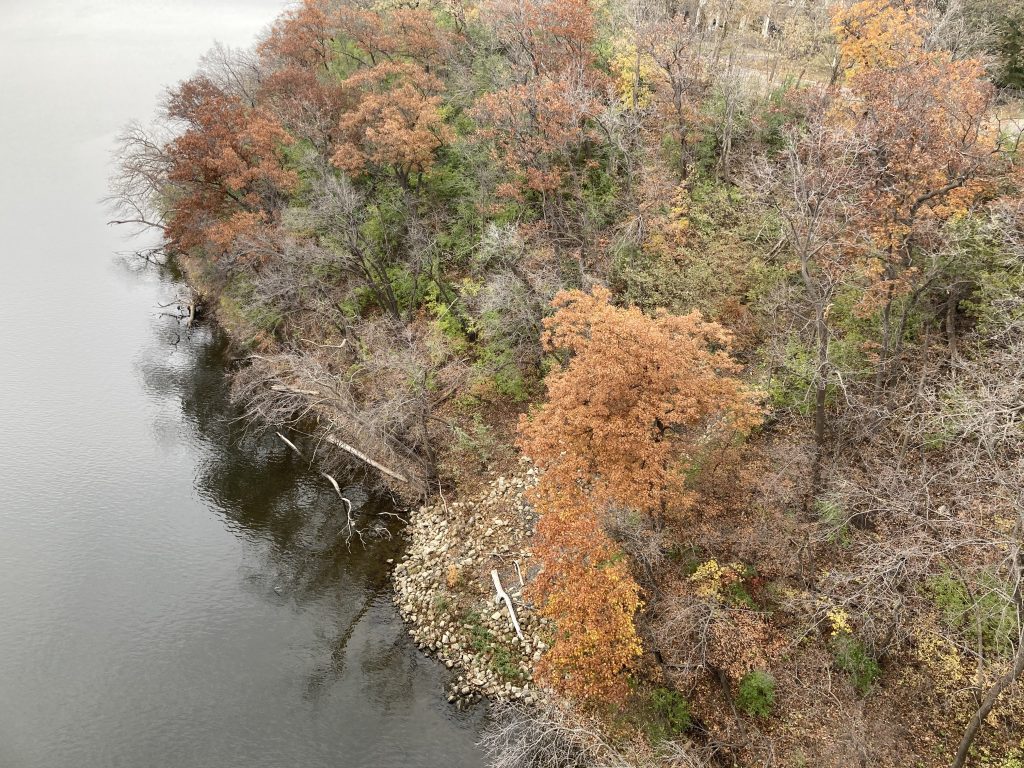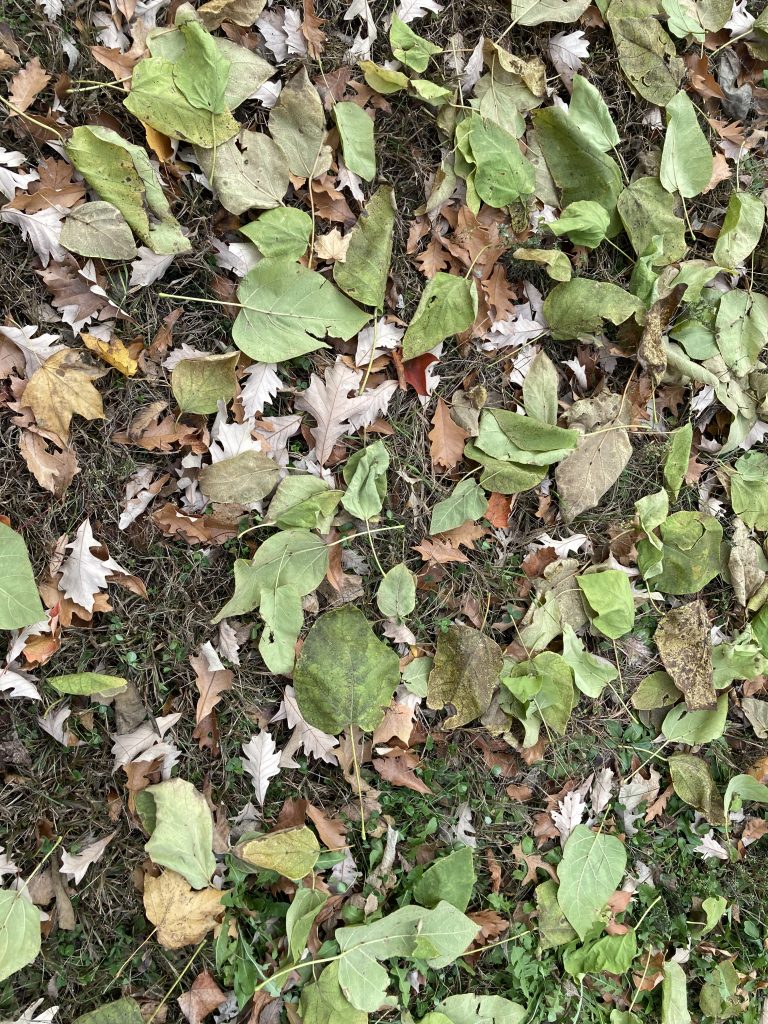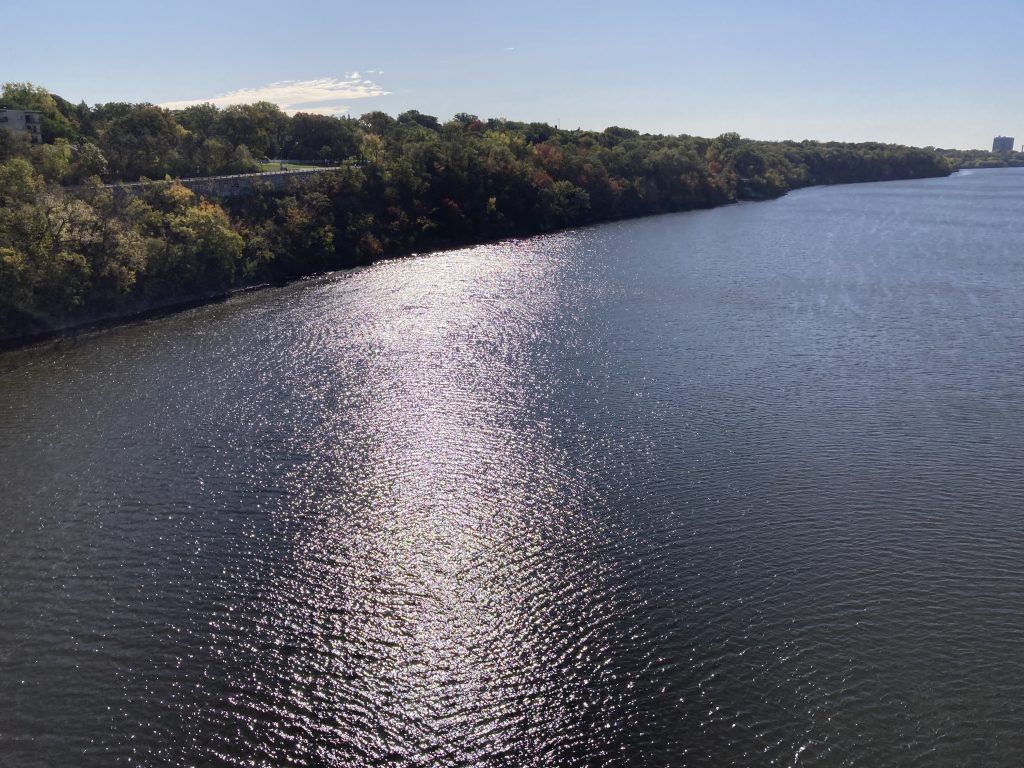4.1 miles
minnhehaha falls
31 degrees / 50+% thin, slippery ice
wintery mix
Stepped outside and felt the sidewalk — at first, it seemed fine, but at the end of the block I realized a lot of it was covered in an invisible sheen of ice. Oh well, too late to turn back. It was never really a problem, although it was pretty slick on the cobblestones at the falls. But I didn’t fall; barely even slipped! Waved a greeting to Santa Claus, heard the kids at the playground, noticed 2 people hiking below under the falls. I watched them step over the rope blocking off the trail.
Stopped at my favorite spot to put in a playlist. Before I started running again on the ice, I took this short footage of the falls:
10 Things Not Seen
- the thin layer of ice on the sidewalk and the path
- the exact temperature, but I knew it was warm because of how energetic the kids on the playground were
- a runner, approaching. I thought I had seen a biker so I was looking for them, meanwhile a runner was approaching me and I had no idea. Saw him a couple seconds before I might have run into him
- open water — the river is iced over
- the light rail, but I heard its bell as I ran through the park
- my shadow — too gloomy and gray
- light rain falling — barely felt it either
- no fat tires or Daily Walkers or bright blue running tights
- the woodpecker knocking on dead wood in the gorge
- my breath — too warm today for that!
before the run
I was just about to write that I’ve moved on from windows — my January challenge — to assays and not seing but in midst of thinking it I conjured a new version of windows that I’d like to ruminate on for a moment: a window opening. I like the slight difference that exists between an open window and a window opening. An open window is already open, but a window opening captures the moment when the air first enters and new understandings arrive.
Side note: Suddenly while writing this, I remembered a mention of windows that is almost entirely unrelated to the last paragraph except for it involves windows and not knowing how to open them. I just finished the gothic horror novel. A House with Good Bones by T. Kingfisher. I don’t want to spoil it for anyone else reading this, but near the end some monstrous creatures are attempting to open a window but they don’t know how. If they did, it would be the end for the main character and her companions. I’ve already returned the book (bummer) or I’d post the actual description here of the strong creatures flailing and not understanding the concept of a window — it’s gross and disturbing and compelling and not recommended when you’re eating lunch (which I was).
I’m about to go out for a run. I’ll try to think about opening windows or windows opening.
during the run
I imagined I might have a few moments where something I noticed felt like a window opening. I didn’t. About a mile in, I decided to do triple beat chants with the word: op en ing/ op en ing — then, op en ing/wel com ing/ won der ing. Thought about the openness of opening versus the confinement of closed, or even closing. After chanting opening for a few minutes, I remember lifting out of my hips and leading with my chest — an opening of my body.
after the run
Walking back after I finished my run, I listened to The Woman in the Window. I heard this and it got me thinking:
“And what’s going with the rest of the block?”
I realize I have no idea. The Takedas, the Millers, even the Wassermen–they haven’t so much as pinged my radar this last week. A curtain has fallen on the street; the homes across the road are veiled, vanished; all that exists are my house and the Russells’ house and the park between us.
Not seeing: being so preoccupied/obsessed with something that everything else doesn’t exist.
Then the narrator continued and I thought some more:
I wonder what’s become of Rita’s contractor. I wonder which book Mrs. Gray has selected for her reading group. I used to log their every activity, my neighbors, used to chronicle each entrance and exit. I’ve got whole chapters of their lives stored on my memory card.
Before the run I had been thinking about what it means to not see. I’d also been thinking about what it means for me to see. I might turn both “Not Seeing” and “Seeing” into poems and submit them to Couplet Poetry for their submissions window next month. Anyway, listening to the first bit from The Woman in the Window, I suddenly thought about how an obsession, being preoccupied with something, like whether a neighbor has been murdered, makes one myopic. And then listening to the second bit, I thought about the new way I see by making note of everything, slowly, habitually noticing all the small, seemingly unimportant and peripheral moments. This is how I see now: moment on moment on moment.
Here’s a poem by Jane Hirshfield. It’s in her “assay” form, which I’ve been studying for the past few days. As I understand it, an assay explores, imagines, tries out different meanings of a word or a concept. Is this an assay about “moment” or am I’m misunderstanding the poem?
Assay Only Glimpsable for an Instant/ Jane Hirshfield
Moment. Moment. Moment.
–equal inside you, moment,
the velocitous mountains and cities rising and falling,
songs of children, iridescence even of beetles.
It is not you the locust can strip of all leaf.
Untouchable green at the center,
the wolf too lopes past you and through you as he eats.
Insult to mourn you, you who mourn no one, unable.
Without transformation,
yours the role of the chorus, to whom nothing happens.
The living step forward: choosing to enter, to lose.
I who am made of you only
speak these words against your unmasterable instruction–
A knife cannot cut itself open,
yet you ask me both to be you and know you.
